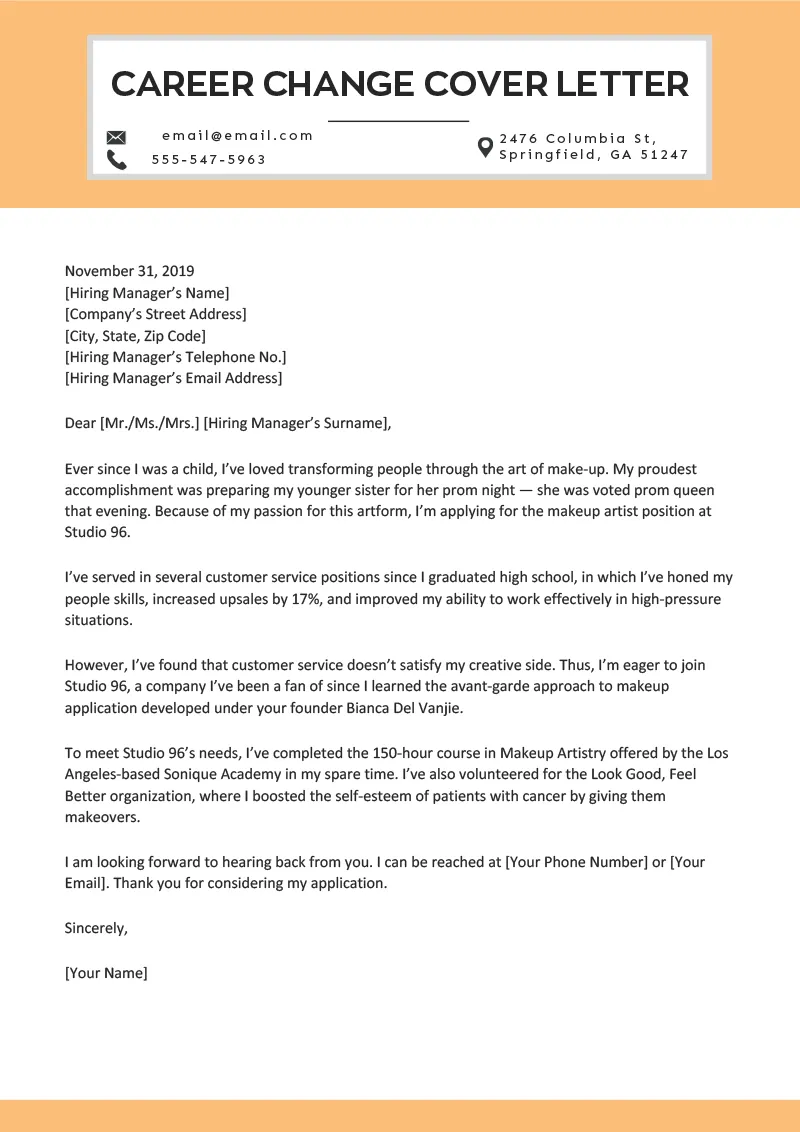Crafting a Career Change Cover Letter
Embarking on a career change is a significant step, and your cover letter is your first opportunity to make a strong impression on potential employers. A well-crafted cover letter for a career change must address the transition directly while highlighting your relevant skills and experiences. This guide provides a comprehensive overview of how to write an effective career change cover letter, focusing specifically on the human resources (HR) perspective. By understanding what HR professionals look for, you can tailor your letter to increase your chances of landing an interview. This process involves more than just listing your past experiences; it requires strategic framing to showcase your adaptability, enthusiasm, and potential for success in a new field. Crafting this letter involves careful thought and execution, ensuring every detail resonates with the reader and aligns with the requirements of the HR department.
Understanding the Human Resources Perspective
Human Resources departments are tasked with assessing candidates for cultural fit, skill alignment, and long-term potential. When reviewing a career change cover letter, HR professionals want to see a clear narrative that explains your motivations, demonstrates transferable skills, and highlights your commitment to the new field. They look for candidates who have researched the company, understand the role, and can articulate how their previous experiences make them a valuable asset. Furthermore, HR will evaluate your communication skills, attention to detail, and overall professionalism. The ideal cover letter will demonstrate an understanding of HR’s needs, showcasing how your unique background and skills can contribute to the team’s success. It’s essential to present yourself as adaptable and eager to learn, and provide evidence that your transition is well-considered and strategic.
Highlighting Transferable Skills
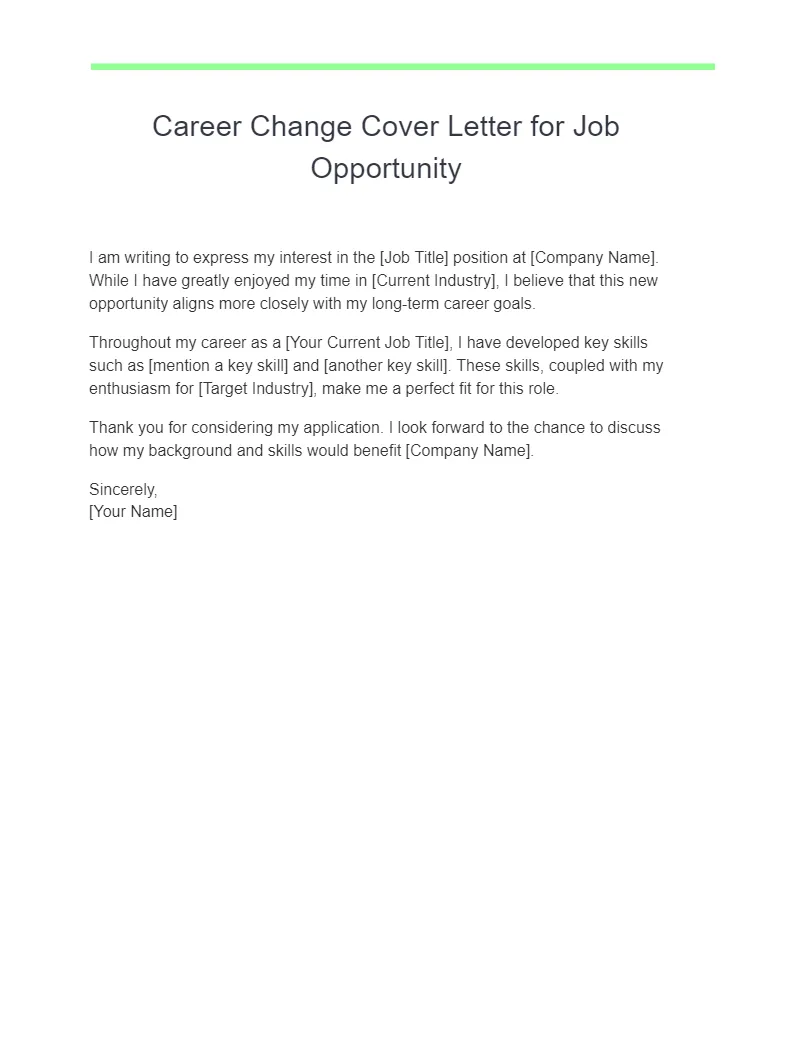
One of the most crucial aspects of a career change cover letter is highlighting transferable skills. These are the skills you have gained in previous roles that are applicable to your desired HR position. Examples include communication, problem-solving, leadership, organization, and project management. To identify your transferable skills, review the job description carefully and make a list of the required skills and qualifications. Then, reflect on your past experiences and identify instances where you have demonstrated these skills. For instance, if the job description mentions ‘conflict resolution,’ think about a time you successfully mediated a dispute in a previous role. Providing concrete examples will demonstrate your ability to apply your skills in various contexts, increasing your credibility and making your application more persuasive. By emphasizing these skills, you prove to the HR team that you are capable and prepared to thrive in a new environment.
Identifying Relevant Skills for HR
While highlighting transferable skills is essential, it is equally important to identify the skills directly relevant to human resources. These include knowledge of employment law, recruitment and selection processes, performance management, and employee relations. Researching the specific HR roles you are applying for will help you understand the required skills. Customize your cover letter to emphasize the skills that align with the job description. For instance, if the role requires experience in recruitment, provide examples of your past involvement in hiring processes, such as screening resumes, conducting interviews, or managing onboarding. If the position focuses on employee relations, highlight your experience in handling employee issues or providing support. Being specific and providing supporting evidence will make your application more compelling and demonstrate your commitment to the HR field.
Tailoring Your Cover Letter to HR
The key to a successful career change cover letter lies in tailoring it specifically to the HR department and the job you are applying for. Generic cover letters often fail to capture the attention of HR professionals because they don’t demonstrate a genuine interest in the role or the company. Start by researching the company’s mission, values, and culture. Then, analyze the job description and identify the key requirements and expectations. Customize your cover letter to address these points directly. Mention the company’s name and the specific role you are applying for in your opening paragraph. In the body of the letter, explain how your skills and experiences align with the job requirements and the company’s values. Demonstrate your understanding of HR practices and show how you can contribute to the team’s goals. Personalizing your cover letter ensures that you stand out from the crowd and convince the hiring manager that you are the right candidate.
Researching HR Roles and Needs
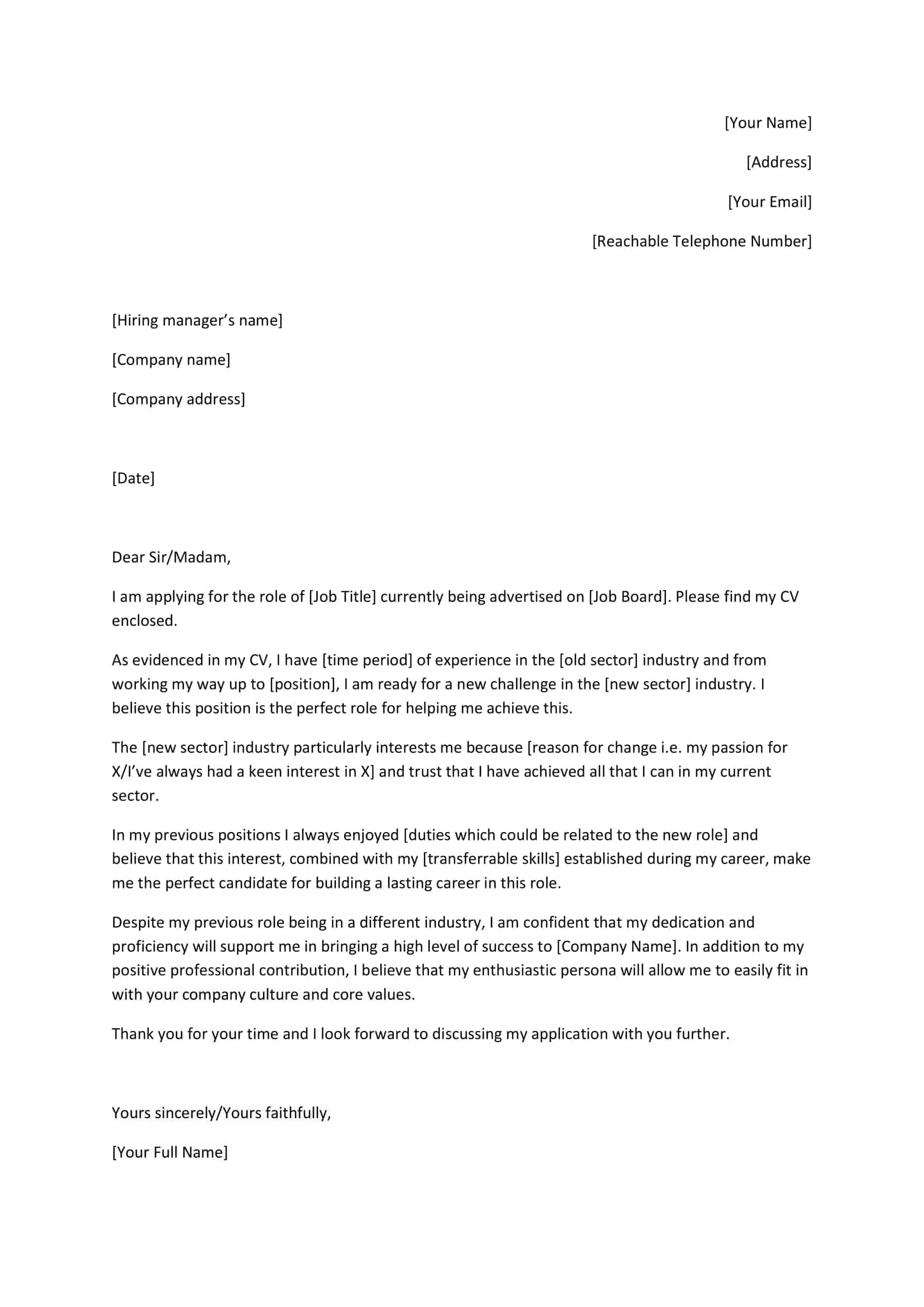
Before you start writing your cover letter, thoroughly research the specific HR roles you are interested in and the companies you are targeting. Understanding the day-to-day tasks and responsibilities of different HR positions will help you tailor your cover letter effectively. Explore the company’s website, LinkedIn profiles, and industry publications to gain insights into their HR practices and needs. For instance, if the company emphasizes diversity and inclusion, highlight your experience in promoting these values. If the company is expanding its team, demonstrate your ability to adapt and take on new challenges. Look for keywords and phrases used in the job description to align your cover letter with the specific requirements. This targeted approach shows HR professionals that you have done your homework and are genuinely interested in the opportunity.
Showcasing Your Achievements
Instead of simply listing your job responsibilities, focus on showcasing your achievements in your cover letter. Use action verbs to describe your accomplishments and quantify your results whenever possible. Instead of saying ‘Managed employee training programs,’ you could say ‘Developed and implemented employee training programs, resulting in a 20% increase in employee satisfaction.’ Provide specific examples of how you have positively impacted your previous employers. This could include reducing costs, increasing efficiency, improving employee morale, or resolving conflicts. Highlighting your achievements demonstrates your ability to deliver results and provides tangible evidence of your skills and capabilities. By focusing on your successes, you make a strong case for your potential to excel in a new role within the HR department.
Quantifying Your Accomplishments
Quantifying your accomplishments is crucial for making your cover letter more impactful and persuasive. Whenever possible, use numbers and data to illustrate your achievements. For example, instead of saying ‘Improved employee retention,’ you could say ‘Improved employee retention by 15% through the implementation of a new performance management system.’ This type of specific data gives the reader a clear understanding of your impact. Quantifying your accomplishments shows that you can measure success, track progress, and deliver tangible results. Consider using metrics such as cost savings, increased efficiency, improved employee satisfaction scores, or successful project completion rates. These quantifiable results provide concrete evidence of your skills and abilities, making your application more compelling and memorable.
Addressing the Career Change

Address your career change directly and honestly in your cover letter. Avoid trying to hide or downplay your transition, as this may raise concerns among HR professionals. Instead, provide a brief explanation of why you are seeking a career change and what motivates you to pursue a role in human resources. Be clear and concise, emphasizing your genuine interest in the field and your commitment to making a successful transition. You might mention a specific event, personal experience, or realization that sparked your interest in HR. For example, you could say ‘My passion for helping others and fostering positive work environments led me to pursue a career in human resources.’ Framing your career change positively shows HR that you are making a deliberate and well-considered decision and are prepared to apply your skills in a new capacity.
Explaining Your Transition
In addition to explaining your motivations for the career change, explain how your previous experiences have prepared you for a role in human resources. Even if your previous roles were in a different field, highlight the skills and knowledge you gained that are transferable to HR. For example, if you have experience in customer service, you can mention your ability to communicate effectively, resolve conflicts, and build relationships. If you have experience in project management, you can highlight your organizational skills, attention to detail, and ability to meet deadlines. Connect your past experiences with the requirements of the HR role, demonstrating how you can apply your skills to contribute to the team’s success. This strategic approach assures the hiring manager that you are ready and capable of transitioning into the new field.
Demonstrating Your Enthusiasm
Demonstrate your enthusiasm for a career in human resources. Your cover letter should reflect your passion for the field, your eagerness to learn, and your commitment to making a positive impact. Show genuine excitement about the opportunity to join their team, and express your admiration for the company’s values and culture. You can mention specific aspects of the company or role that resonate with you. For instance, you could express your interest in their employee development programs or their commitment to diversity and inclusion. Ensure your tone is positive, professional, and enthusiastic, and make it clear that you are eager to contribute to the HR team’s success. Demonstrating your enthusiasm will make a lasting impression on the hiring manager and increase your chances of being selected for an interview.
Expressing Your Passion for HR
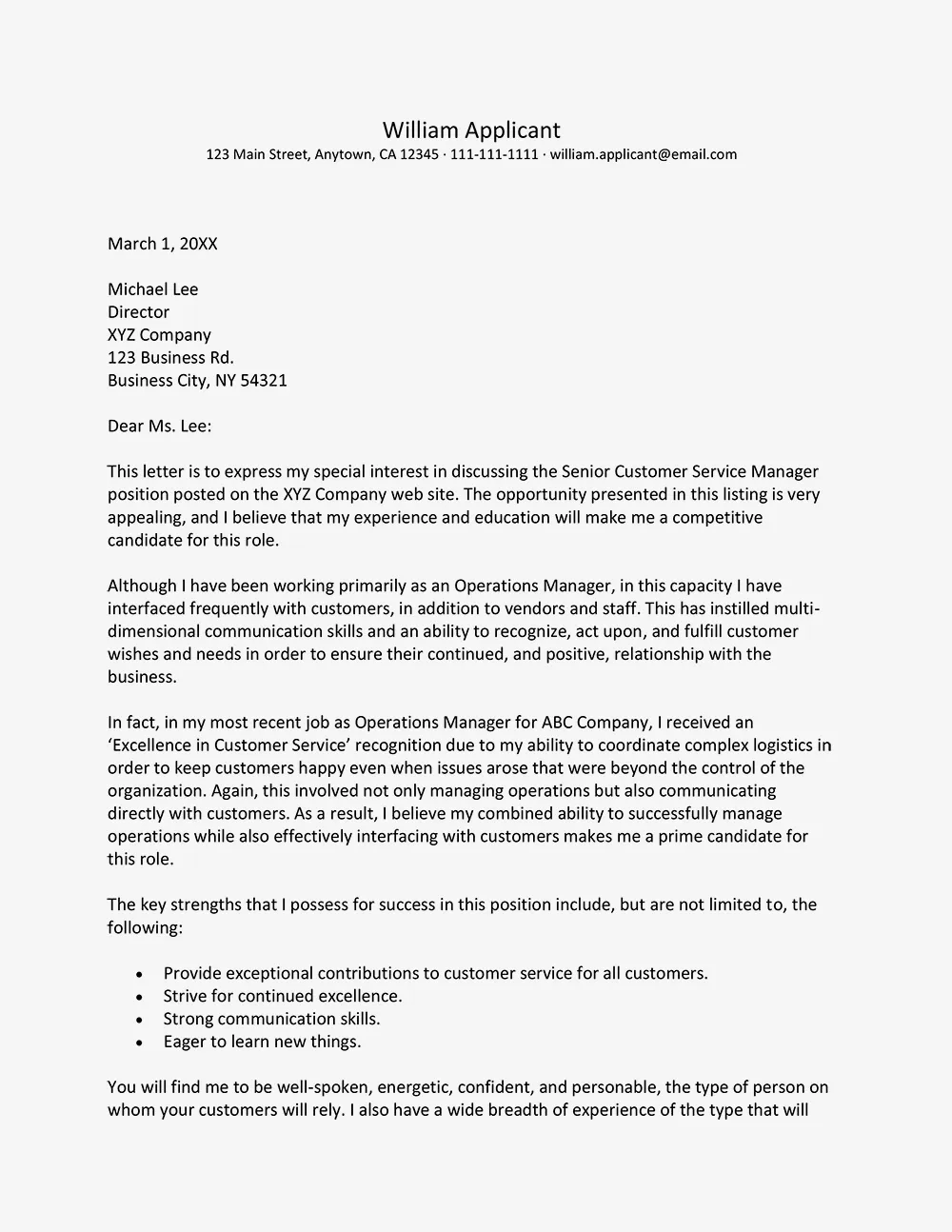
Expressing your passion for human resources is essential for showcasing your genuine interest in the field. Go beyond simply stating that you are interested in HR; provide concrete examples of why you are passionate about the role. Mention specific aspects of HR that fascinate you, such as employee relations, talent acquisition, training and development, or compensation and benefits. Explain why these areas appeal to you and how you plan to contribute to them. Talk about any courses, certifications, or volunteer experiences that demonstrate your dedication to the field. If you have attended HR-related workshops or seminars, mention those too. By expressing your genuine enthusiasm for HR, you demonstrate that you have a clear understanding of the role and are committed to building a successful career in the field, improving your chances of being hired.
Formatting and Structure
The formatting and structure of your cover letter can significantly impact its readability and overall appeal. Use a professional and easy-to-read format with clear headings, concise paragraphs, and appropriate font sizes. Start with a professional salutation, such as ‘Dear [Hiring Manager Name],’ if you know it or ‘Dear Hiring Team’ if you don’t. The body of your letter should include an opening paragraph, a few body paragraphs highlighting your skills and experiences, and a closing paragraph. Keep your paragraphs short and focused, making it easy for the reader to scan the document. Use bullet points to highlight key skills or achievements, making the information more accessible. Ensure your letter is well-organized and visually appealing. Proper formatting helps the hiring manager easily understand your message and see your value as a potential employee.
Essential Cover Letter Elements
Certain elements are essential to include in your career change cover letter. Start with a compelling opening paragraph that grabs the reader’s attention and clearly states your purpose for writing. In the body paragraphs, highlight your transferable skills, relevant experiences, and accomplishments. Provide specific examples to support your claims and quantify your results whenever possible. Address the career change directly and explain why you are interested in a role in human resources. Express your enthusiasm for the company and the role. Include a call to action in your closing paragraph, such as requesting an interview or offering to provide additional information. Ensure you include your contact information, including your phone number and email address. By including all these elements, you make your cover letter comprehensive and increase the chances of a positive response.
Common Mistakes to Avoid
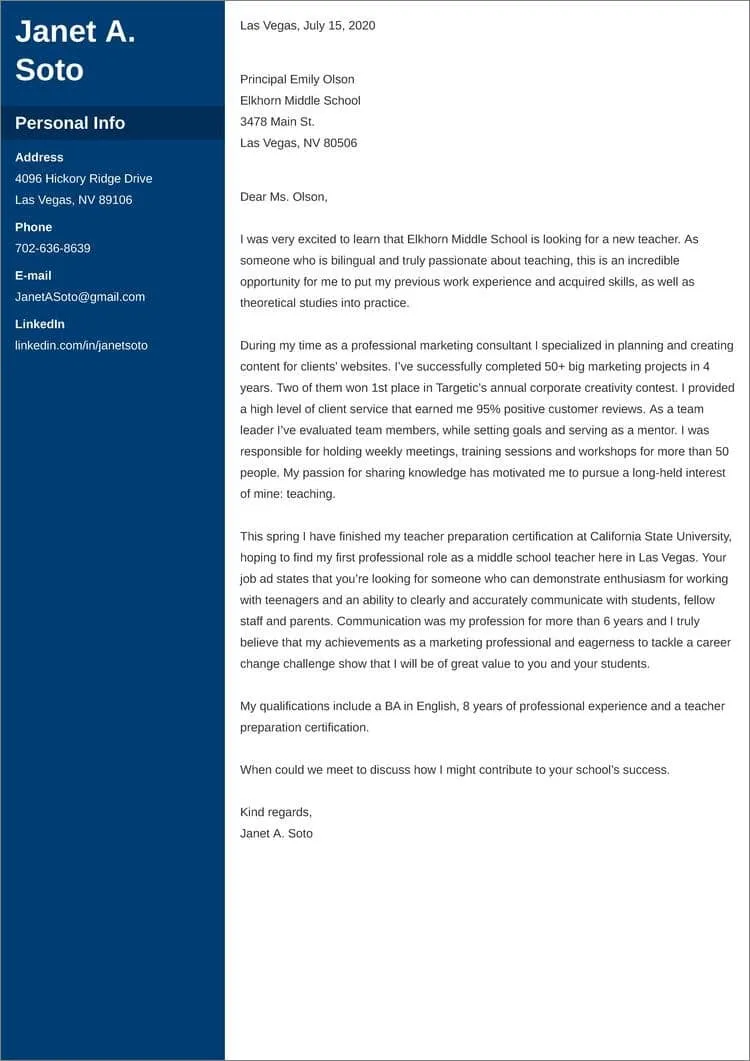
Several common mistakes can undermine your cover letter and reduce your chances of getting hired. Avoid using generic language or writing a generic letter that could be used for any job application. Always tailor your letter to the specific role and company. Do not simply list your responsibilities; instead, focus on showcasing your achievements and quantifying your results. Avoid making grammatical errors, spelling mistakes, or typos, as these can create a negative impression. Avoid using jargon or overly complex language that might be difficult for the reader to understand. Don’t make the mistake of downplaying your career change or failing to explain your motivations. Be sure to proofread your letter carefully, and consider having someone else review it for you, to eliminate any mistakes and to confirm it has a professional appearance.
Proofreading and Editing
Proofreading and editing your cover letter is a crucial step in the writing process. Even the most well-written cover letter can be weakened by grammatical errors, spelling mistakes, or typos. Before submitting your cover letter, carefully proofread it for accuracy. Check for any errors in grammar, punctuation, and spelling. Ensure that your sentences are clear, concise, and easy to read. Consider having a friend, family member, or career advisor review your cover letter for feedback. They can offer a fresh perspective and identify any errors you may have missed. Proofreading and editing demonstrate your attention to detail and commitment to producing high-quality work, making your cover letter more professional and compelling.
Finalizing and Submitting
Before submitting your cover letter, review all aspects of your application, including the cover letter, resume, and any other required documents. Ensure that your contact information is accurate and up-to-date. Customize your cover letter and resume to align with the specific job requirements, paying careful attention to the language used in the job description. Save your documents as a PDF file to preserve the formatting. Double-check the company’s application instructions to ensure that you submit your materials in the correct format and by the deadline. Finally, take a deep breath, and submit your application with confidence, knowing that you have put your best foot forward and are prepared to embark on your career change journey in human resources. By following these steps, you can create a compelling cover letter that grabs the attention of HR professionals and increases your chances of landing an interview.
